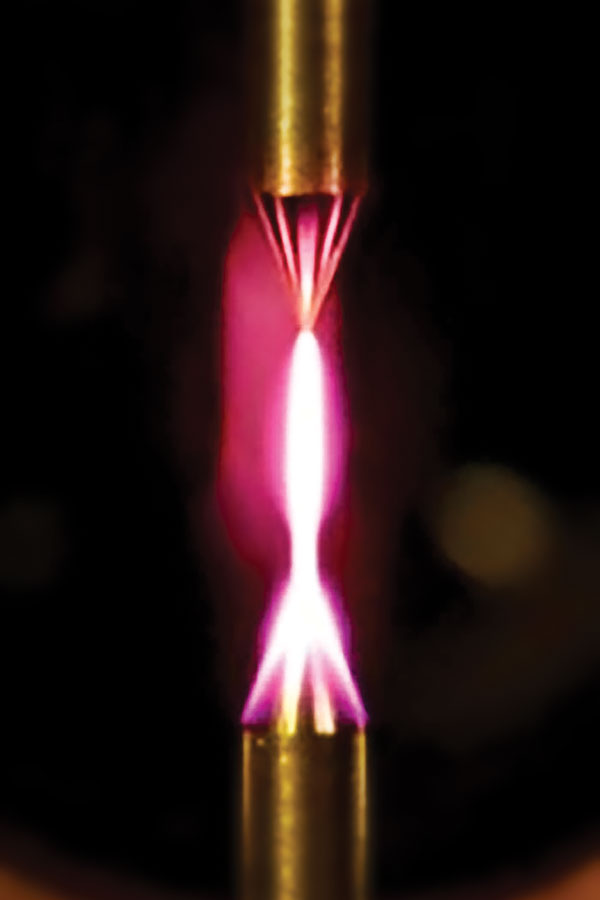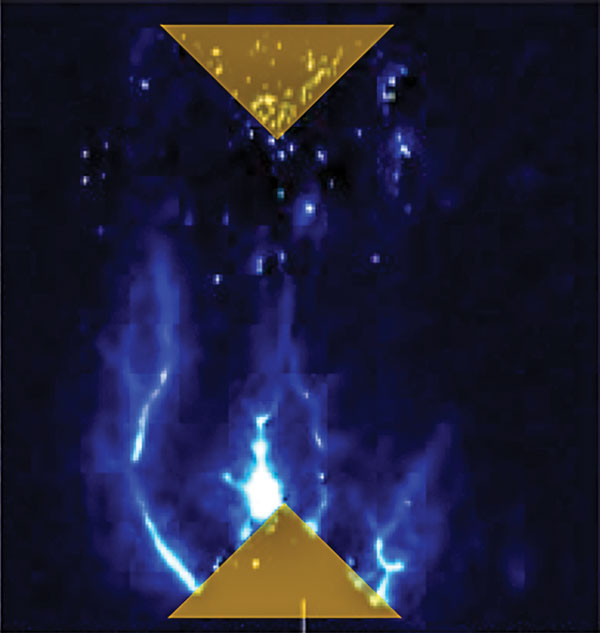Sandia establishes collaborative research facility to study pervasive and versatile low-temp plasmas
A collaborative plasma research facility to help researchers worldwide study low-temperature plasmas, the most pervasive state of matter in the universe, is being stood up by Sandia.
The 5-year, $5.5 million project, called the Sandia Low Temperature Plasma Research Facility, is sponsored by DOE’s Office of Science. Participants will be selected biannually through a proposal process supported by Sandia and the Princeton Plasma Physics Laboratory, where a similar collaborative facility is being established by the same agency.
Low-temperature plasma — a state of matter, along with solids, liquids and gases — consists of gaseous mixtures of ions and electrons that interact with background neutral atoms or molecules to make them reactive. It also generates energetic photons.
This activity means there’s no shortage of plasma uses to study. They decontaminate surfaces, decompose materials and strengthen a wide range of industrial catalytic reactions. Medically, they offer new tools to cut and heal tissues. Plasma makes metal-arc welding possible and lights up plasma lamps.

But that’s small scale. Consider that the ionosphere wrapping the Earth is a plasma that carries large electric currents in the polar regions. And low-pressure, collisionless plasmas that generate little heat are of interest to astrophysicists studying plasmas hanging out between stars.
Built-in versatility
“In my view, a collaborative plasma research facility is different from a center for research,” said facility leader Ed Barnat, an internationally recognized expert in diagnosing conditions associated with low-temperature plasmas. “While a center can be a team of people focused on a specific subset of plasma science, a collaborative research facility is more customer-oriented: We help the visiting scientists set up their systems in our laboratories and utilize our capabilities to help answer their questions.
“Our job will be to interface with the potential collaborators and help them find the right tools and people in our Sandia facilities,” Ed said.
Other Sandia researchers supporting the collaborative facility are Matt Hopkins, a computational modeling and simulation expert for plasma physics; Ben Yee, an experimentalist and modeling and simulation scientist; and Jonathan Frank, Chris Kliewer and Nils Hansen, three researchers at Sandia’s Combustion Research Facility in California, who all have extensive experience developing and applying laser diagnostics and mass spectrometry to explain the physics and chemistry occurring in reacting flows.
Extreme tools and expertise

Tools available to visiting scientists to analyze plasma behavior include nanosecond (a billionth of a second), picosecond (a trillionth of a second) and femtosecond (one millionth of one billionth of a second) laser systems, picosecond-shuttered cameras, massively parallel computers to simulate the range from vacuum to atmospheric-pressure plasma, a wide variety of spectrometers and the equipment needed to build or incorporate a broad range of plasma sources and operating conditions.
Sandia researchers expect to engage with scientific collaborators to design, set up and execute proof-of-principle studies to enable participants to further their research objectives and analyze data generated during the collaboration.
For the past decade, Ed has received funding from DOE to operate a prototype collaborative plasma research facility, said Sandia manager Shane Sickafoose.
“This experience made Ed’s expertise, along with Sandia’s one-of-a-kind diagnostic tools, available to the larger community,” Shane said. “His team has provided critical insights regarding characteristics of electrical breakdown and plasmas. We have images resolved in picoseconds — trillionths of a second — that detect and display electrical fields prior to and during electrical discharge events.”